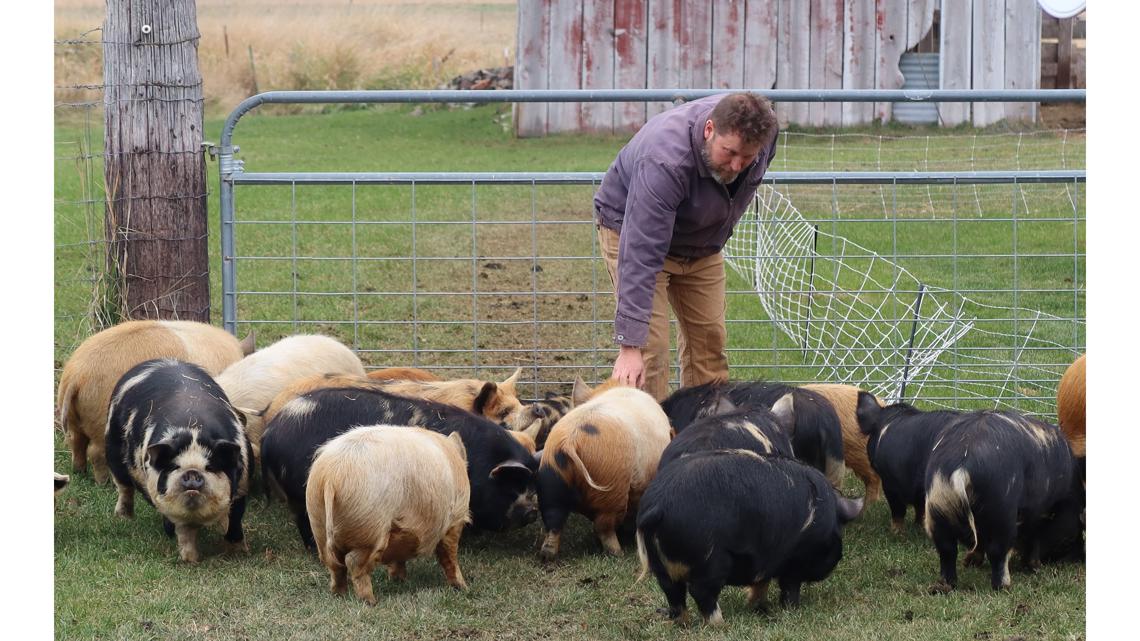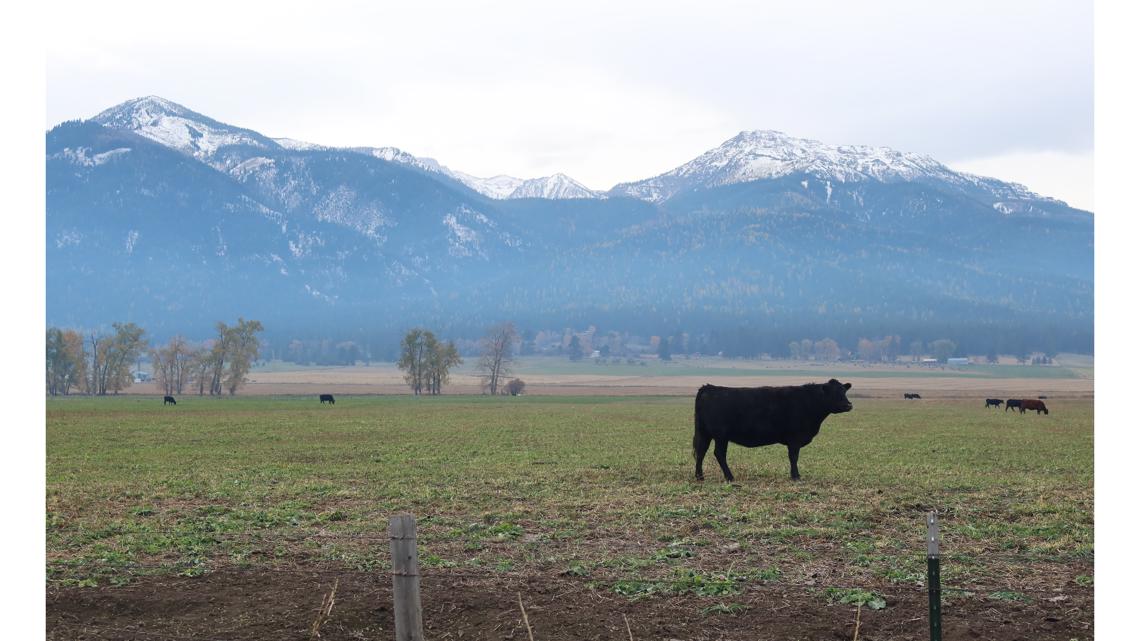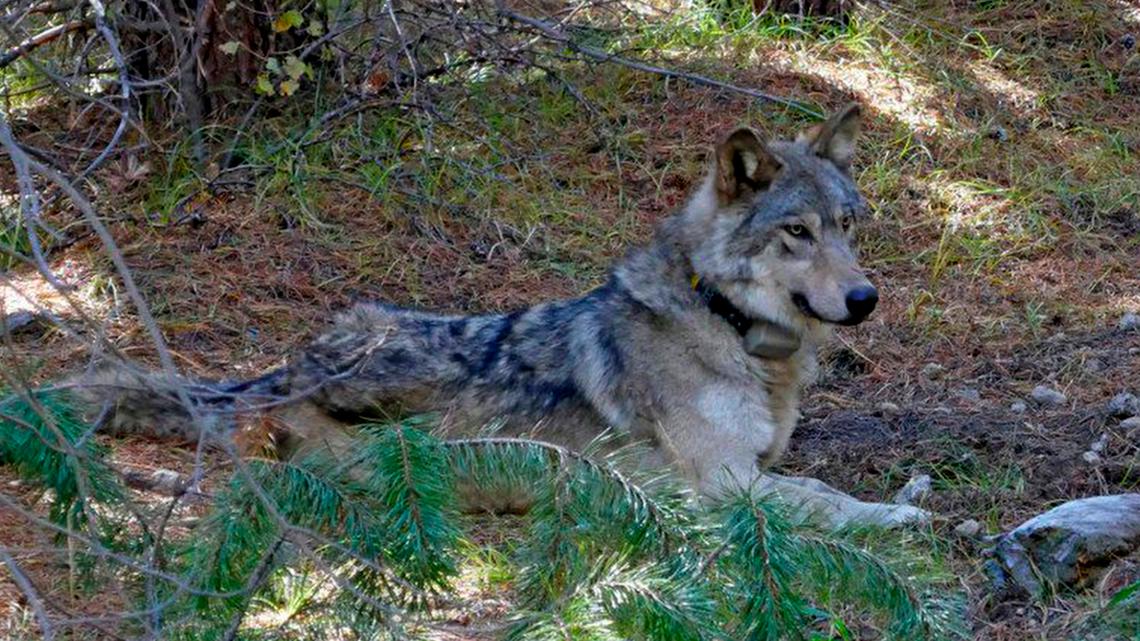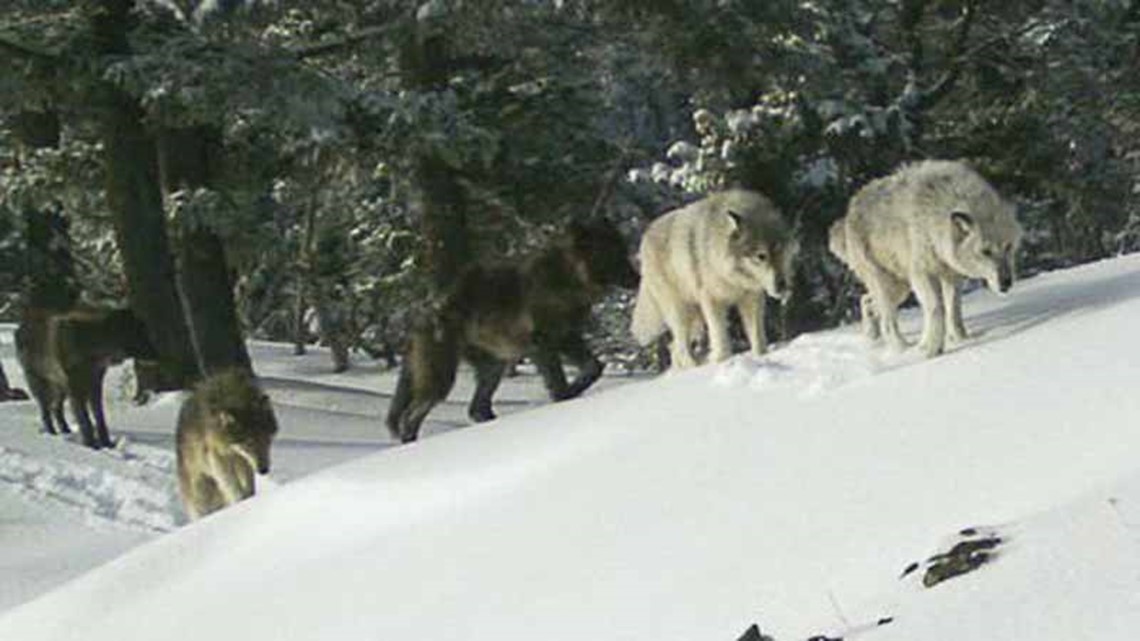ENTERPRISE, Ore. —
Gray wolves can inspire strong feelings in different people for very different reasons. For some, they embody independence, cunning and the wildness of the Western landscape. For others, they represent a threat that could cost them financially and potentially disrupt their way of life.
In Enterprise, Oregon, it’s not hard to find folks on either side of the issue.
“In 2009 we had our first pack,” said John Williams, the wolf committee chair with the Oregon Cattlemen’s Association. “The next year all of a sudden they started killing livestock.”
Wolves once roamed all over Oregon and much of the West, but after a century of bounty programs, the predators were extirpated from much of their native range by the mid-1900s.
When wolves first came back to Oregon, they returned with federal protection under the Endangered Species Act. Those protections were lifted in northeast Oregon more than a decade ago as wolf numbers rebounded.
So Enterprise seemed the perfect place to find the answer to a simple question with a complicated answer: Should gray wolves be seen as an Endangered Species Act success story, or something else entirely?
“Prior to the Endangered Species Act being enacted, wolves were headed directly towards extinction,” said Rob Klavins, northeast Oregon field coordinator with Oregon Wild. “So having more than zero is definitely a measure of success, but it's a far cry from having meaningful biological recovery.”
Here, gone and back again
Before Oregon had even become a state, wolves were a problem in this part of the country.
As white settlers moved west, many predators — but especially wolves — were targeted for the threat they posed to livestock. In 1834, the first bounties were put up for wolves. By the early 1900s, wolf hunters could receive up to $25 per dead wolf they turned in.
The last wolf bounty was collected in 1947, and the animals were effectively eradicated from the state.
For more than 70 years, Oregon was essentially wolf-free, but that changed about 15 years ago when wolves that had been reintroduced in Idaho began wandering west across the Snake River.
From the back deck of Williams’ house just outside of Enterprise, sweeping views of the Zumwalt Prairie grasslands to the north give way to the rugged mountains of Idaho further east.
“The first pack was here in Wallowa County,” Williams explained, pointing out a path the wolves frequented when they first arrived. “It was known as the wolf highway in the early days.”
A lot had changed between 1947 and 2009, but some things remained the same.
“The social tolerance for wolves is pretty low in the ranchers,” Williams said.
Around the same time, Klavins began working on wolf issues from a conservation perspective.
“Wolves were starting to make their way back here into Oregon and we just realized that there really wasn't anybody advocating on behalf of wolves,” he said.
Klavins was working out of Portland at the time, but it didn’t take him long to see the draw of wolf country.
“About 10 years ago, my wife and I moved out here and we'd really started to fall in love with the place,” said Klavins, who now runs a bed and breakfast with a small working farm not far from John Williams’ house.


When wolves first came back to Oregon, Klavins saw much of the sentiment that led to their eradication in the first place.
“When wolves really started returning to this landscape, things were really volatile and emotional,” he said. “You would see lots of ‘shoot, shovel, shut up,’ which are bumper stickers that basically promote poaching and killing wolves.”
A ‘game changer’
Wolves are apex predators and mostly feed on ungulates — hooved animals like deer and elk. They do also sometimes kill livestock, though; Williams said it has introduced a level of strain on ranchers that they thought they were rid of.
“I cannot underestimate the emotional trauma, the stress, that the wolf is putting on ranchers,” he said. “It is a game changer.”
The most recent wolf count in Oregon put the minimum number of wolves at 178 animals living in two dozen packs, though the state cautions that those are only wolves that can be confirmed, and the actual number is likely higher.
In 2022, the Oregon Department of Fish and Wildlife investigated 121 suspected wolf attacks in the state. Of those, 76 were confirmed, marking a 55% increase from the previous year.


Williams said that some ranchers have become disenchanted with the state’s response and don’t always report suspected wolf kills.
“Every rancher that’s gotten a confirmed kill that I know of has looked at me and said, ‘Oh I had three of those last year,’” he said.
Each wolf kill can represent a sizable loss to a rancher, when adult beef cows go for upwards of $1,500.
Wolf attacks account for just a fraction of livestock losses ranchers incur, and the state has a fund that compensates for some of those losses. But Williams said the effects of wolves on cattle can’t just be measured in dead cows. Just the presence of wolves on the landscape can spook a herd, leading to losses that are much harder to quantify.
“Their conception rate goes down about 10%, and the calves come in 60 to 80 pounds lighter in the fall,” Williams said. “These are the types of things that ranchers are dealing with. It’s not the dead animals that really economically gets you.”
And Williams is clear about what he thinks the solution should be.
“When a wolf gets in trouble, it dies, and when it doesn’t get in trouble and it stays away from tolerant people, from people and their livestock and their private property, it lives and it breeds,” he said.
When wolves first returned to Oregon, federal Endangered Species Act protections prohibited killing them for any reason. Those protections were lifted in 2011 and wolves came under management by the state, which said wolves can only be killed in certain scenarios.
As it stands today, a wolf in eastern Oregon can only be killed after two confirmed attacks within a nine-month span, but only if the rancher has used non-lethal deterrents like range riders, noise makers or electric fencing.
Last year, 24 wolves were killed in Oregon, 17 of them by humans. Of those, six were killed after repeated attacks on livestock — some by the state itself and others by ranchers with kill permits. Another seven were killed illegally.


Klavins said he understands that there are situations that call for the killing of wolves and he’s not against it in every scenario, but he also thinks the state is too quick to issue kill permits.
“I often liken killing wolves to itching a mosquito bite. It's easy. It's cathartic. It's just kind of the reflexive thing you do,” he said. “But the reality is that when you look at the science, it shows that there are better ways to do things.”
Wolves have complex social dynamics and removing an animal can upset the order of a pack. Klavins pointed to research that shows that killing a wolf – especially if it’s the best hunter in the pack – can have unintended consequences.
“When you kill wolves and disrupt that pack structure, you have changes that can be totally unexpected, and oftentimes those changes make them more likely to have conflict with wildlife rather than less likely.”
Klavins was clear that he doesn’t know the ins and outs of ranching like ranchers do, but he said there are more effective ways to deter wolves from attacking livestock; guard dogs, changing the timing of when they go out to pasture and cleaning up bone piles among them.
But Klavins also said he knows that these solutions aren’t one-size-fits-all and will require more work on the part of ranchers.
“The reality is this stuff is complicated, and this landscape is complicated,” he said. “What works for an open range cow pasture in the canyon lands is very different than a small, forested pasture with a sheep operation.”
Up to this point, this story might sound a little familiar if you’ve been following wolf issues in the Northwest. Ranchers want to protect their livestock. Wolf advocates want fewer wolves to be killed.
But there’s another group who played a crucial role in wolves returning to the west whose voice is often left out of the conversation.
‘Welcoming our brother wolf’
Wolves didn’t magically reappear in the Pacific Northwest and they didn’t migrate back to the region from Canada.
In the mid-1990s, The Nez Perce tribe played in instrumental role in the reintroduction of wolves.
For several years, the federal government had been considering reintroducing the species, specifically in Idaho. But lawmakers in that state repeatedly rejected the idea.
So in 1994, the Nez Perce became the first sovereign tribe to lead the reintroduction of an endangered species into its native territory.
Julian Matthews, an enrolled member of the tribe and co-founder of the nonprofit Nimiipuu Protecting the Environment, remembers when the first group of wolves was brought back to central Idaho for release.
“They did these ceremonies,” he said. “The elders were there singing songs and welcoming our brother wolf, the spirit of the wolf, back to our land. it was really touching for me to see that.”
Wilbur Slockish Jr., an elder with the Klickitat Band of Yakama Nation, remembers hearing stories from his grandmother about the role wolves played on the landscape.
“I distinctly remember her talking about the wolf. He was there to take care of the sick, the old and the injured animals,” Slockish said. “We would eat no diseased or sickly or injured animal. That was his food.”
For Matthews, it’s been distressing to see old anti-wolf sentiments pop up as the predator has regained a foothold in the west, and he can’t help but see some similarities in how Indigenous people have been treated.
“They want to get rid of them. They don't want that many around because politically they're not popular,” he said. “It always reminds me of the Indians. We want your land, so we need to get rid of you Indians off your land so we can go in there and take it over.”
Matthews sees the ways wolves are managed now as the byproduct a flawed way of viewing the natural world.
“The federal government, they think they own the river, they think they own the land. They own the forest, and they own the animals,” he said, noting that he’d like to see wolf management returned to the tribes. “They haven't really come up with a plan on how to work together with wolves and with cattle, because there are ways you can, but their solution is always just to get rid of them.”
Does delisting equal success?
When wolves in Idaho and Oregon were taken off the endangered species list in 2011, one might be forgiven for assuming that meant the species had reached some biological threshold.
Klavins said that was far from the case.
“Delisting processes are, and have always been, political. They're not based on science,” he said. “Delisting goals tend to be arbitrary measures of political compromise that are based on making sure that they don't go extinct and represent essentially the minimum that the least tolerant people are willing to accept.”
And while Klavins and Williams don’t agree on much about wolves, both think that the Endangered Species Act is a flawed instrument.
“Should there be wolves here?” Williams asked rhetorically. “I think it's fine that we have wolves where wolves should be. And they’re going to get there eventually because of the Endangered Species Act. But it’s a sledgehammer when a tap hammer should have been used.”
And that’s not all Klavins and Williams agree on. Both say they’ve seen improvements in wolf issues in Oregon, though for different reasons.
Klavins said it’s a misperception that all of eastern Oregon is staunchly anti-wolf and the reality is that most people fall somewhere in the middle rather than at either of the extremes.
“There are actually a lot of people in this community that that are happy to see wolves here,” he said. “In the time that I've been here, I've seen attitudes change. Certainly, they are still really entrenched views, but generally I think things have moderated.”


And Williams said he’s seen improvements to the state’s response to ranchers' concerns about wolves, though he said there is still plenty of room for improvement.
“In the last six months we’ve seen changes, but I tell them it's not near fast enough for what’s happening out here with our livestock losses that we’re having,” Williams said.
For Matthews, though, the fact remains that wolves have been a part of the western landscape since time immemorial and that’s something he doesn’t want to see change.
“We just have to learn to live in harmony with them to where we respect them and they respect us,” he said. “Whether it's the salmon in the river or the wolves in the woods, they have a right to be here just like we do.”
This is the second chapter of "Endangered Northwest," a four-part series on the impact of the Endangered Species Act. Look for part three on Wednesday, which will focus on efforts to protect dwindling native salmon populations.
Part 1: The Northern spotted owl
Part 2: Reintroducing gray wolves
Part 3: Decline of Pacific salmon

